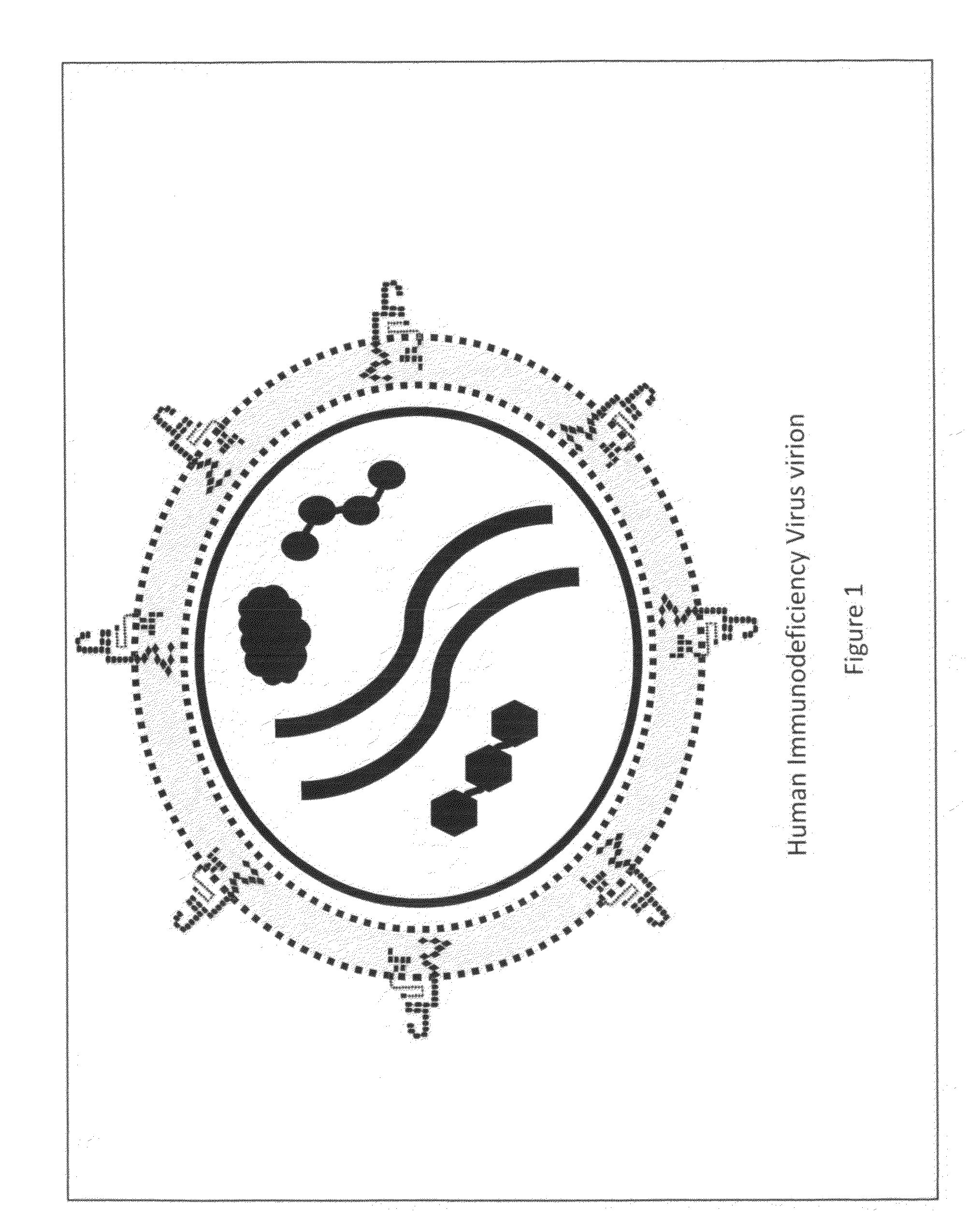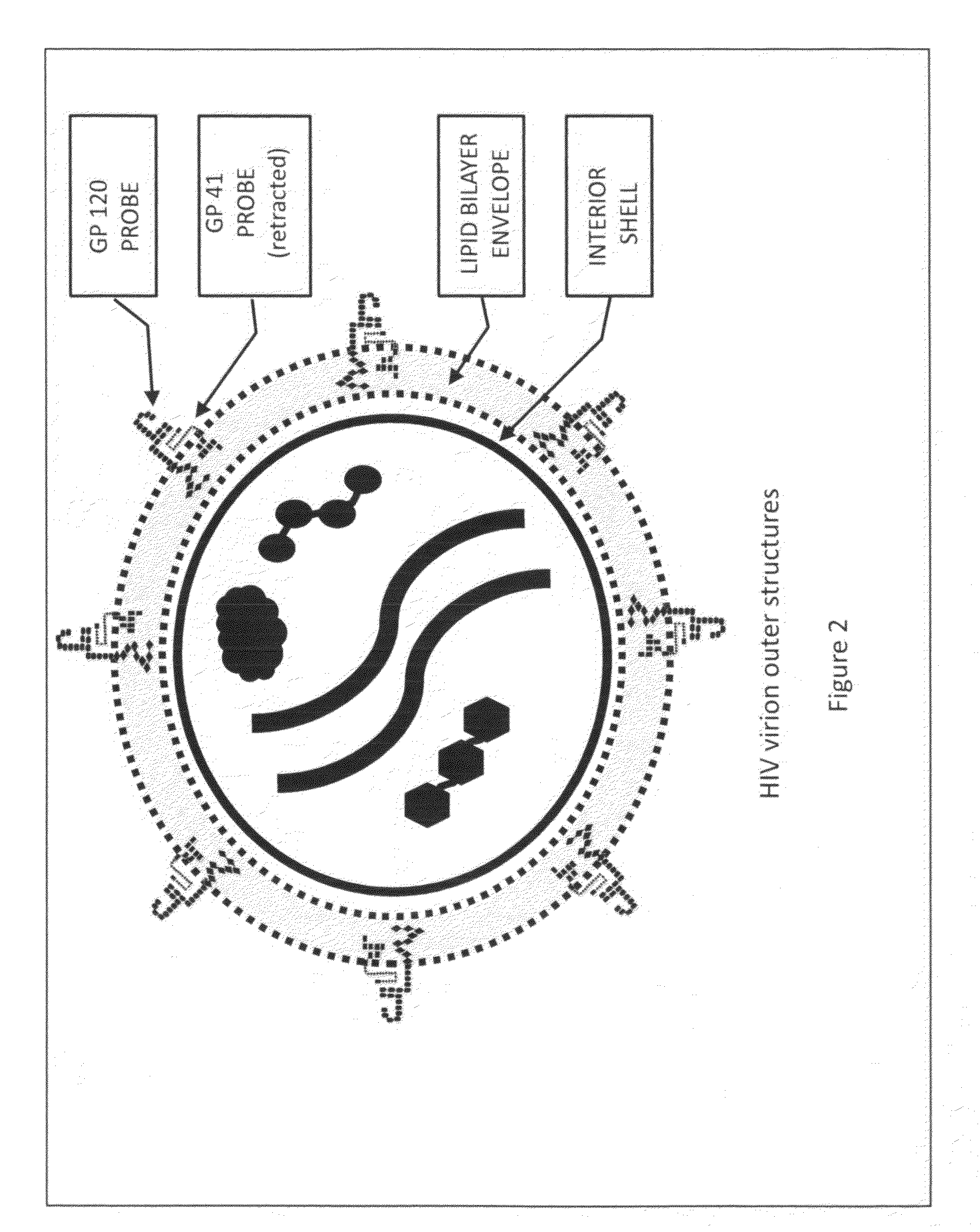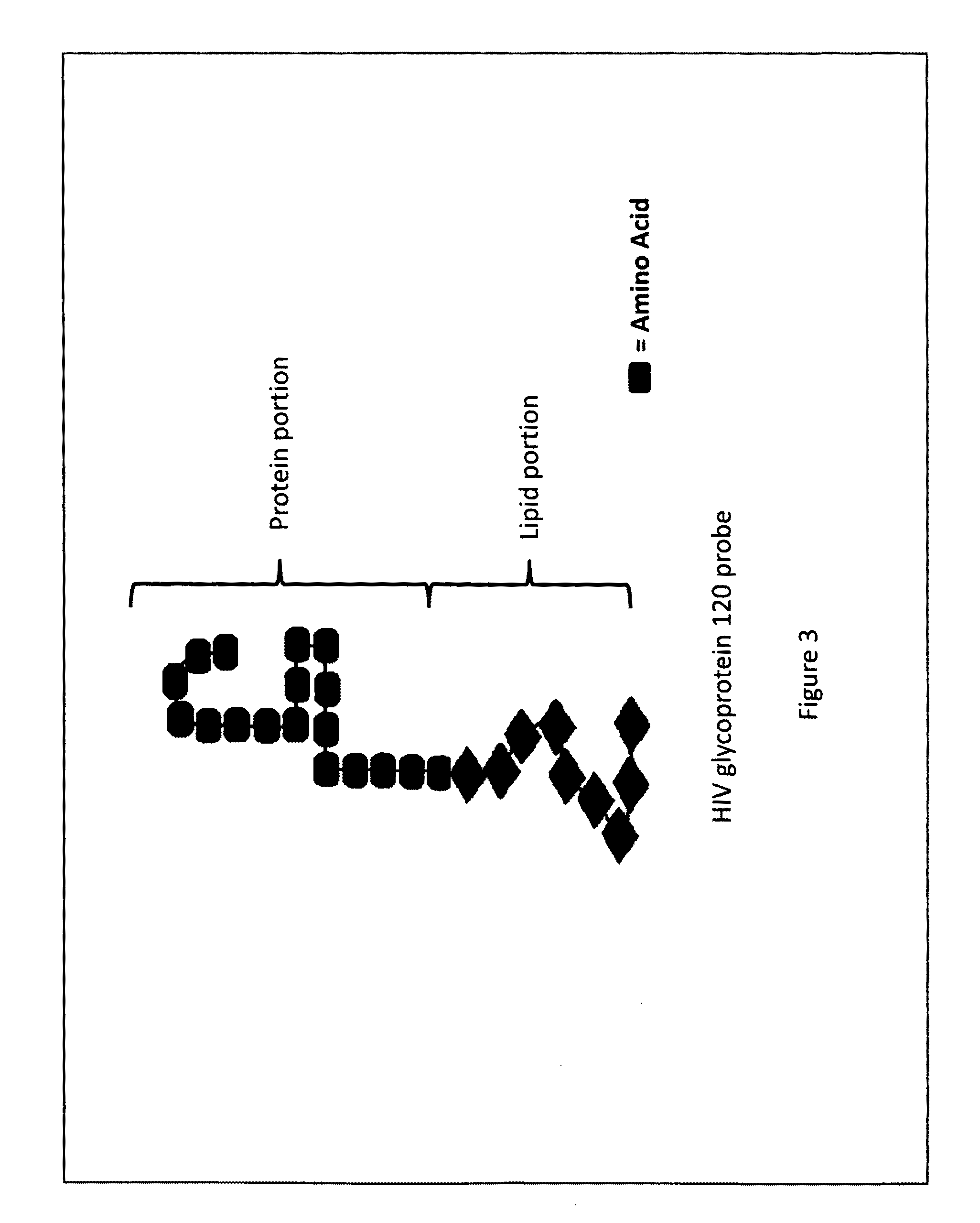Vaccine comprised specifically of protein subunits of human immunodeficiency virus's glycoprotein 120 probe to prevent and treat an infection caused by the human immunodeficiency virus
a technology glycoprotein 120, which is applied in the field of vaccines comprised specifically of protein subunits of human immunodeficiency virus to prevent and treat an infection caused by human immunodeficiency virus, can solve the problems of viruses, in general, difficult to contain and eradicate, and a much different challenge to the body's defense system, etc., to achieve safe, effective, and practical effect of vaccines
- Summary
- Abstract
- Description
- Claims
- Application Information
AI Technical Summary
Benefits of technology
Problems solved by technology
Method used
Image
Examples
Embodiment Construction
[0037]Vaccines created to combat infectious medical diseases are generally comprised of a liquid medium that carries in suspension intact virus or bacteria of a particular strain that has been weakened to the point it is unable to generate an infection, or a vaccine is comprised of pieces of a virus or bacteria of a particular strain. The weakened, but intact virus or bacteria or the pieces of a virus or bacteria are meant to activate the immune system of the individual receiving the vaccine, such that the individual's immune system will generate antibodies against the intact virus or bacteria or the portions of the virus or bacteria the immune system is exposed to by way of the vaccine.
[0038]Due to the fact that the exterior surface of a human immunodeficiency virus is comprised of essentially the same material as the outer membrane of a T-Helper cell, introducing to the immune system weakened HIV virions or portions of HIV's exterior envelope may lead to a vaccine that has deleter...
PUM
| Property | Measurement | Unit |
|---|---|---|
| Structure | aaaaa | aaaaa |
| Molecular structure | aaaaa | aaaaa |
Abstract
Description
Claims
Application Information
 Login to View More
Login to View More - R&D
- Intellectual Property
- Life Sciences
- Materials
- Tech Scout
- Unparalleled Data Quality
- Higher Quality Content
- 60% Fewer Hallucinations
Browse by: Latest US Patents, China's latest patents, Technical Efficacy Thesaurus, Application Domain, Technology Topic, Popular Technical Reports.
© 2025 PatSnap. All rights reserved.Legal|Privacy policy|Modern Slavery Act Transparency Statement|Sitemap|About US| Contact US: help@patsnap.com



